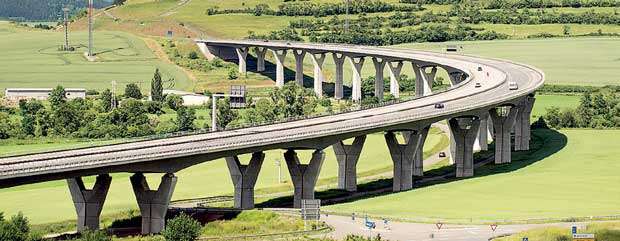06 Jun 2018 - {{hitsCtrl.values.hits}}

 In the context of strained public finances and limited borrowing capacity for developing countries, there is growing debate on the roles of public and private actors to deliver the trillions of dollars of infrastructure necessary to achieve the Sustainable Development Goals (SDGs).
In the context of strained public finances and limited borrowing capacity for developing countries, there is growing debate on the roles of public and private actors to deliver the trillions of dollars of infrastructure necessary to achieve the Sustainable Development Goals (SDGs).
On one hand, high-profile public-private partnership (PPP) project failures have cast doubt about the viability of the model. On the other hand, while public authorities are ultimately responsible for the delivery of public services, deficient infrastructure services in some countries have raised concerns about the ability of the public sector to deliver on its own.
This is not a black-and-white issue. Public and private finance are complementary, with different objectives and characteristics suitable in different contexts and sectors. The recently published 2018 report of the Inter-Agency Task Force on Financing for Development, to which almost 60 agencies and international institutions have contributed, explores this debate while analyzing financing challenges of SDGs 6 (clean water and sanitation), 7 (affordable and clean energy), 11 (sustainable cities and communities), and 15 (life on land/ecosystems).
Why we need to go beyond financing
Too often, the financing debate is oversimplified to imply the main reason countries need to raise private financing is because they lack public resources. Yet, while private finance can alleviate short-term financing constraints, infrastructure services cannot be provided “for free”, no matter the financing or deployment modality. If an infrastructure project is to be delivered profitably by a private company, the users and/or taxpayers still pay for it in the end.
Instead of focusing on financing gaps, the key question should be how best to provide cost-efficient infrastructure services that are financially and environmentally sustainable and leave no one behind. This requires a better understanding of why infrastructure projects have not always delivered the expected outcomes.
What causes infrastructure problems?
Lessons-learned from past infrastructure projects illustrate one or more of the following issues:
How PPPs can help align incentives better
Involving the private sector through PPPs can tackle some of these challenges by changing the incentive structure in infrastructure projects. Private investors are generally well placed to manage operational and construction risks because they have a financial interest in limiting costs and delays. In sectors such as sea ports and public transport systems, for example, private providers can attract more users and generate additional cash-flows by improving service quality. By bundling the construction and operation of infrastructure projects, PPPs can also help ensure that sufficient resources are allocated to durable construction and maintenance, as private remuneration is tied to asset performance over its lifetime.
What governments need to look out for
Nonetheless, if the right conditions are not in place, PPPs might be a costly proposition—especially if the perceived risk of project failure is high.
Private involvement raises several concerns:
When are PPPs a good fit
Certain sectors are more naturally suited for private involvement than others (for example, energy versus education). The Inter-Agency Task Force on Financing for Development highlighted several factors to consider in determining combinations of private and public ownership, financing and service provision, along with appropriate regulatory frameworks.
They include: (i) whether investments can be sufficiently profitable to compensate private investors for the risks they bear; (ii) whether investments produce goods or services that can be effectively supplied by the market, such as telecom services; (iii) whether projects have positive or negative externalities, for example air and water pollution, that require public involvement; (iv) whether public intervention is warranted for social equity reasons; and (v) whether private investors can bring improvements in efficiency through the profit incentive.
The Inter-Agency Task Force also finds that the local context—in particular the capacity of the public sector to regulate private entities—influences the optimal delivery option, including the associated cost.
PPPs are certainly one financing tool that countries should consider as governments plan the infrastructure investments necessary to achieve the SDGs. But policymakers need to carefully assess the associated risks and opportunities.
As interest in the use of PPPs and other blended finance mechanisms grows, the international community has a responsibility to better understand in which circumstances and conditions such mechanisms are most effective and only promote them in these cases. The growing interest around PPPs should also not divert support to countries in improving governance and capacity that impacts all public services, whether they are provided by public or private actors.
With our research and policy work under the Inter-Agency Task Force, we aim to support countries in making informed decisions so they can close infrastructure gaps in a cost-efficient manner and secure a more prosperous and sustainable world.
(Shari Spiegel is Chief of the Policy Analysis & Development Branch in the Financing for Sustainable Development Office of the Department of Economic and Social Affairs at the United Nations (UN-DESA))
18 Nov 2024 47 minute ago
18 Nov 2024 2 hours ago
18 Nov 2024 2 hours ago
18 Nov 2024 2 hours ago
18 Nov 2024 2 hours ago